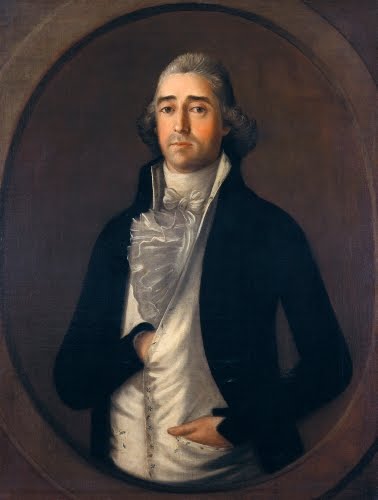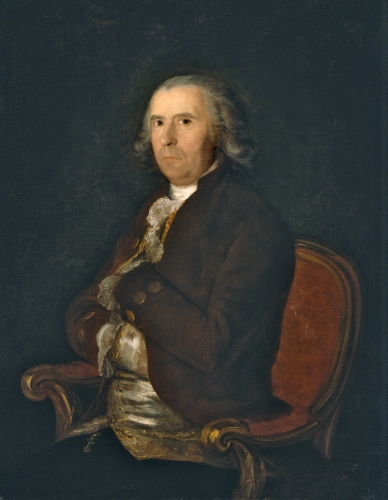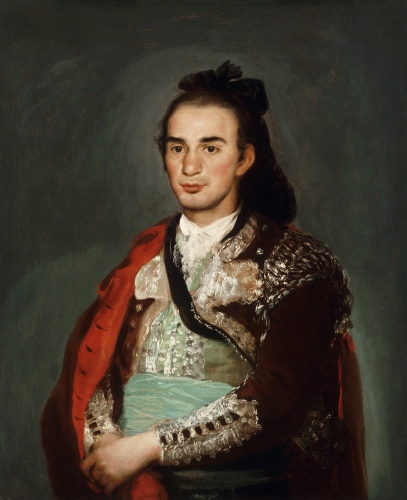Mexican Artists in America: Jose Francisco Xavier de Salazar y Mendoza
I’d like to point out in this blog post the contribution of Mexican artists to American art since long before many parts of the country were colonized as American states. The Spanish tried to lure Mexican colonists into to Louisiana, Texas, New Mexico, and Arizona as early as the late 1600s. They established missions in in the Southwest as early as the 1690s.
This means that Mexicans were the first people to establish “civilization” in the southwestern United States. Only during the 1820s, when the Mexican government could not persuade enough people to populate those areas, did they allow hundreds of Americans to settle in Texas. The rest is history, the so-called “manifest destiny” idea that Americans developed, believing that the whole continent of North America was meant to be controlled by the US.
 |
| José Francisco Xavier de Salazar y Mendoza, Portrait of a Man, 1778. Oil on canvas, 36 1/2" x 28" (92.7 x 71.1 cm). © Worcester Art Museum, Worcester, Massachusetts, Museum purchase. (WAM-206) |
The French founded the city of New Orleans in 1718. It was ceded to Spain in 1762 as part of the peace negotiations with Spain at the end of the Seven Years War. Only under Spanish domination did New Orleans begin to flourish and established an urban identity, becoming a center of trade. New Orleans was handed back to the French in 1800 after Napoleon’s invasion of Spain. He sold it to the United States in 1803.
With the increased prosperity came a desire by New Orleans’ well-to-do to patronize the arts. Since the city had no native artists, and no art school existed until the end of the 1800s, many of the artists who rose to prominence under Spanish rule were from Mexico. José Francisco Xavier de Salazar y Mendoza was the best known of those artists and the most sought after for portraiture commissions at the time.
Originally from Mérida on the Yucatan in Mexico, Salazar and his family moved to Spanish-ruled New Orleans around 1782. Already an accomplished artist trained in the Spanish Rococo style, he received numerous commissions for portraits of prominent families and community leaders. Under his tutelage, his daughter Francisca became an artist and assisted him in his studio. He may have also been assisted by his brother.
This portrait of a prosperous gentleman reflects Salazar’s awareness of Spanish portraiture of the period. The emphasis in Rococo portraits was a subtle idealization of the subject’s features, emphasis on luxurious garments, and elegance of bearing that would reflect the status and refinement of the sitter. Like most Spanish Rococo portraits, the palette is somewhat darker than that in French and English portraits of the same period. The neutral background is similar to those seen in American portraits of the period. Not unusual for Spanish colonial painters at the time, most of Salazar’s canvases, like this one, were unsigned.
Compare this portrait to those of Francisco de Goya (1746–1828) in Spain at the same time:
 |
| Francisco de Goya, Portrait of a Man in a Brown Coat. Oil on canvas. © Museum of Fine Arts, Boston. (MFAB-1108) |
 |
| Francisco de Goya, Portrait of the Toreador José Romero, ca. 1795. Oil on canvas. © Philadelphia Museum of Art. (PMA-2802) |
Studio activity: A portrait in clay. Sculpt a bust-length portrait or self-portrait using clay. Consider realistic proportions, try to show expression (happy or sad), and pay attention to detail. Notice that the eyes of a portrait are halfway between the top of the head and the chin. Make sketches of the portrait before beginning.
Correlations to Davis programs: Explorations in Art Grade 1: 2.8; Explorations in Art Grade 2: 2.8, Explorations in Art Grade 3: 1.2; Explorations in Art Grade 4: 2.7; Explorations in Art Grade 6: 1.1, 1.2; A Personal Journey: 3.2, 6.4; A Community Connection: 2.4; Exploring Visual Design: 3, 9; Discovering Art History: 11.5


Comments